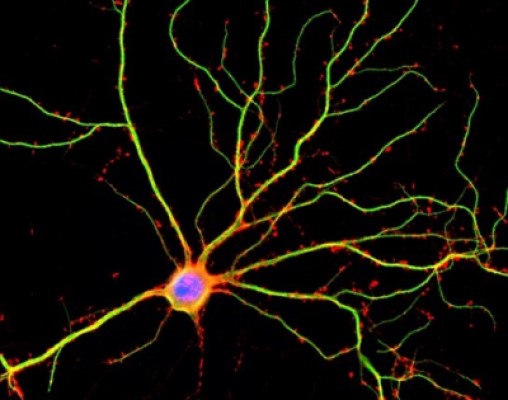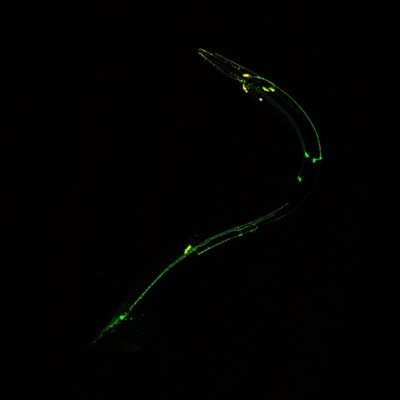Anesthesia
On this page:
- What Is Anesthesia?
- Types of Anesthesia
- What Scientists Know About How Anesthesia Works
- NIGMS-Funded Research Advancing Our Understanding of Anesthesia
- Research Organisms Used to Study Anesthesia
What Is Anesthesia?
Anesthesia is a medical intervention that prevents patients from feeling pain during procedures like surgery, certain screening and diagnostic tests, tissue sample removal (e.g., skin biopsies), and dental work. Anesthesiologists are doctors who have been specifically trained to give medicines used for anesthesia, which are called anesthetics. Depending on the type of pain relief needed, anesthesiologists can deliver anesthetics through several methods:
- Gas that the patient inhales through a mask covering the mouth and nose
- Intravenous line with a needle inserted into a vein, giving direct access to the bloodstream
- Catheter (thin tube) inserted into the space outside of the spinal cord or around peripheral nerves
- Injection into a body part with a needle and syringe
- Topical lotion or spray
- Eye drops
- Skin patch
Before the introduction of safe and effective anesthetics about 175 years ago, surgeries of any kind were rare, dangerous, and only used as a last resort. Patients who underwent surgeries at this time did so fully conscious. Now, advances in anesthesia have allowed for lifesaving surgeries that would be impossible otherwise. Surgeries to treat cancer, organ transplants, and open-heart surgery are only a few types of the important techniques anesthesia has made possible. Modern anesthetics are typically very safe, but there are risks involved, including breathing problems, allergic reactions, and general confusion after surgery.

Types of Anesthesia
There are four main types of anesthesia. Each has different effects on the body:
- General anesthesia affects the whole body, making patients unconscious and unable to move. Anesthesiologists will give general anesthesia for complex surgeries involving internal organs or other invasive or time-consuming procedures, such as back surgery. These anesthetics are given either through an intravenous line or as an inhaled gas.
- Monitored sedation is like general anesthesia in that it relaxes the body and may induce sleep. Different combinations of sedatives, anesthetics, and analgesics are given through an intravenous line. However, in monitored sedation, patients are still conscious and may even be able to talk, depending on the level of sedation needed. This form of anesthesia is often combined with other types of pain relief for procedures such as a colonoscopy or complex dental work.
- Regional anesthesia numbs pain and sensation to only the part of the body that needs it, such as an arm, a leg, or everything below the waist. This type of anesthesia is used in hand and joint surgeries and C-section deliveries, as well as to ease the pain of childbirth. With regional anesthetics, patients stay conscious and comfortable. These medications are given through an injection or a catheter.
- Local anesthesia affects only a small part of the body. For example, this type of anesthetic is used to block pain to a single tooth during a dental procedure or to a part of the skin that needs stitches. As with regional anesthesia, patients who receive local anesthesia remain awake and comfortable. Local anesthetics are commonly given as an injection, topical lotion or spray, eye drops, or skin patch.
What Scientists Know About How Anesthesia Works
Anesthesia prevents the feeling of pain by stopping nerves from passing signals to the brain. Scientists don’t know exactly how all types of anesthetics work, but they do know that some anesthetics block pain by:
- Altering neurotransmitter release. Neurotransmitters are the chemical messengers that pass signals between nerve cells. They can cause signal transmission (excitatory) or block signal transmission (inhibitory). Certain general anesthetics cause the release of inhibitory neurotransmitters—while others block the release of excitatory neurotransmitters—to reduce the activation of nerve cells.
- Altering the activity of ion channel proteins. Normally, ion channel proteins pass ions through nerve cell membranes to transmit signals. General and local anesthetics that work in this manner prevent ion passage to block signal transmission.
NIGMS-Funded Research Advancing Our Understanding of Anesthesia
Scientists are studying the basic mechanisms of anesthesia to optimize its safety and minimize its side effects. Some of the questions they seek to understand are:
- How does the brain wake up from general anesthesia? Nerve cell activity changes throughout the brain as people wake up from anesthesia. However, how different regions of the brain are involved in the awakening process and the effect of these changes in activity remain unclear.
- How can anesthesiologists better tailor medicine to their patients? Some patients wake up from anesthesia early while others experience a delayed return to their normal mental state. Some of these differences are controlled by genes that affect how quickly the body clears the anesthetics. Personalized anesthesia aims to consider a patient’s genes when determining which drug, and what dose, will be the safest for them.
- Can long-acting anesthetics treat pain after surgery? Scientists are developing injectable drug delivery systems that can provide local anesthesia that lasts for days to weeks. Systems such as these can be a safe alternative to habit-forming opioids to treat postsurgical pain.

Research Organisms Used to Study Anesthesia
Caenorhabditis elegans (C. elegans) is a small, multicellular roundworm species that has the simplest nerve cell organization of any animal sensitive to anesthesia. Using tools such as fluorescence microscopy, researchers can track the activity and behavior of the C. elegans nervous system when exposed to anesthesia. Studying these behavioral patterns can help researchers learn more about cell changes in altered consciousness.
Cell cultures, which are cells derived from humans or research organisms and grown in a lab, can be used in studies to understand how anesthetics act. They are also helpful in testing possible new anesthetics for toxicity. Ensuring that new won’t be toxic when given to humans is an important part of drug development.

Content reviewed September 2023
NIGMS is a part of the National Institutes of Health that supports basic research to increase our understanding of biological processes and lay the foundation for advances in disease diagnosis, treatment, and prevention. For more information on the Institute’s research and training programs, visit https://www.nigms.nih.gov.
